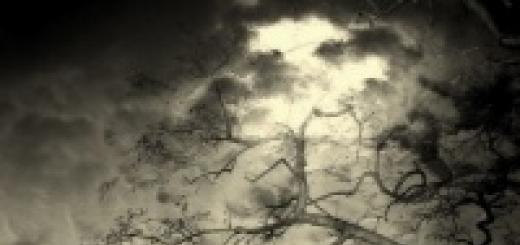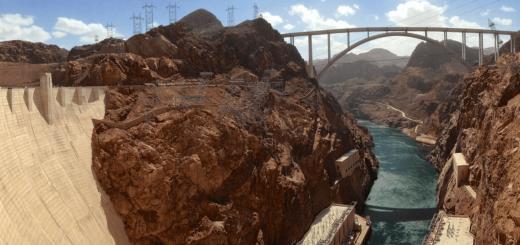How to understand that in your hands was a stone not from this planet?
A meteorite is a body of cosmic origin that has crashed onto the surface of a large celestial object.
Mechanism
When an object enters the atmosphere, friction, pressure, and chemical interactions heat it up. Thus, the meteor begins to radiate energy and forms a fireball. We used to call it a shooting star, but astronomers call them fireballs. Meteors that survive re-entry and impact vary greatly in size. For geologists, a fireball is a meteorite large enough to create a crater.
Most meteoroids evaporate as they enter the Earth's atmosphere. But 5-10 pieces per year reach the surface and are detected by scientists. And some of them are big enough to create an impact crater.
Diagnostics
1. Metal
Most meteorites contain metals. Do you see how the metal sparkles on a fresh chip? If yes, it could be a meteorite.
2. Density
Those meteorites in which there is a lot of metal are very dense, compared to ordinary stones. Your find is small, but very weighty? Maybe it's a meteorite.
But remember that not all meteorites are dense.
3. Magnetic properties
Many meteorites contain shiny iron-nickel metal grains or are composed entirely of an iron-nickel alloy. Is the magnet attracted to the surface of your sample? I hope it attracts.
But remember that many rocks on Earth are also magnetic.
4. Chondrules
Some primitive meteorites contain small round pieces of rocky material. They are called chondrules. Does your sample contain chondrules? If so, congratulations.
But we remember that some sedimentary and volcanic rocks can also have spherical particles that look like chondrules.

Chondra under the microscope
5. Bark melting
When an object pierces the atmosphere, it heats up due to the extreme resistance of its gases. The meteor becomes so hot that the outer surface melts. This is how a black / brown coating appears on the surface of the stone - melting crust. As a rule, such a crust is present on freshly fallen meteorites. And from old samples, the fragile crust falls off, but melting spots can still remain in the recesses.
Does your sample have melt crust? What? It has? My regards.

6. Regmaglypt prints
When the surface of a meteorite melts on entry into the atmosphere, some parts of the meteorites melt faster than others. It looks like someone has scraped them off with small spoons. The surface of most meteorites has these imprints - regmaglipts.

7. Trait and its color
Most meteorites do not leave marks on pottery. But the surface of some specimens is hidden under a layer of rust, which can leave a reddish streak. Hematite and some other ferruginous minerals will give the same strip. And if the sample is magnetized and leaves a black or gray line, then it can be an ordinary earth-earth mineral - magnetite.
Is the stone hard enough to leave no marks? Luck has smiled on you.
PS
If all seven points of meteorite bingo match, you can be sure that you have become the owner of an object of extraterrestrial origin. And now you're at a fork in the road:
Will your discovery become the property of the scientific community? Or will you keep your charms away from the public?
To be honest, I would have wondered too.
The fall of the meteorite is very short and always unexpected. This can happen at any time of the day and year, the place of the fall can also be any. Imagine how many meteorites lie at the bottom of the seas, rivers and lakes?Search engines sometimes find heavy rusty rocks that the metal detector reacts to, but not everyone realizes that this could be a meteorite!
By what signs can one determine that the found stone is actually a meteorite? ..
What are hot stones?
If you use a meteorite-oriented metal detector, then when you find a stone that gives a response to the device, you can assume that a meteorite has been found. However, it can not only be a meteorite, but also “ hot stone” (hot rock - English). This is a fairly common occurrence. What it is?“Hot stones” give the same clear signal as a metal object. Unlike a metal object, the signal from a “hot stone” disappears when the searchcoil moves slightly away from it.
Practically accurate information on the study of "hot stones" is scarce, but it is known that these rocks contain inclusions of magnetite (iron ore), chalcopyrite (copper ore) or other electrically conductive and magnetic minerals.
How to distinguish a meteorite from an ordinary stone? Signs of a meteorite
How to distinguish a meteorite from slag? First of all, you need to have an idea about . There are also characteristic and most important signs of meteorite identification and identification when searching for meteorites:1. Most meteorites have magnetic properties (reaction of a metal detector to an object, they are attracted by a magnet)
2. Characteristic dark gray, black, dark brown or dark red color of the outer surface (the outer surface may also be shiny)
3. The outer surface is melted after passing through the atmosphere
4. When passing through the atmosphere and being exposed to very high temperatures, less dense matter “melts” from the surface of the meteorite. This phenomenon creates notches, ridges and depressions with rounded borders (regmaglipts), resembling fingerprints on clay or plasticine.
5. On the break, inclusions of metals and minerals of other colors are visible (not always visible without magnification)
6. Meteorites are not like Earth's rocks
7. Meteorites tend to be heavier and much denser than regular terrestrial rocks.
When searching for meteorites, the observation of the search engine and can be of great help in identifying the find. To do this, you need to know what different types of meteorites look like (you can even have photographs with you).
If you have the opportunity to set up a metal detector using real meteorites, then do it by all means (this is meteorite calibration).
Good luck!
related tags: meteorites, search for meteorites, differences between a meteorite and a stone, how to distinguish a meteorite from a stone, hot stones, signs of a meteorite, identification of meteorites, how to distinguish a meteorite from slag, definition of a meteorite
I decided to write about how to understand that you have found a meteorite, since almost every day they send me photos of found "meteorites" by email.
There are a lot of theories on the Internet about the properties of meteorites, but I will try to show everything in practice, based on photos sent by amateur meteorologists and meteorites from the collection.
Theory:
1. Meteorites are magnetized and deflect the compass needle.
2.Meteorites are visibleregmaglipty -grooves, dents.
3.Very heavy, as the density is higher than ordinary rocks.
5. If it is sawn and polished, then the iron meteorite, after etching with nitric acid, will seeWidmanstatt figures(metal crystals), in stone meteorites - small chondrules (silicate balls) and interspersed metal are visible, in iron-stone - grains of the mineral olivine (green and transparent) in nickel iron.
6. There is no time.
Practice:
An iron meteorite with distinct regmaglipts.
A polished and acid-etched plate of an iron meteorite with a typical Widmanstätt structure.

A cut of a stone meteorite with chondrules and iron inclusions.

A plate of an iron-stone meteorite - grains of olivine and metal are visible.

Pseudo-meteorites.
Most often, meteorites are confused with these rocks:
Marcasite concretion. The shape is a ball. If broken - a characteristic golden color and a radial-promenous structure, do not magnetize.



Slag- waste of the metallurgical industry. Characteristic features: pores, high gloss, heavy, magnetic.


Breeds that can weakly magnetized.
The photo shows ordinary igneous rocks, but they are weakly magnetic, which gives rise to the idea that these are meteorites.
They differ in that they contain quartz - a transparent mineral (in the first photo - blotches, in the second - a vein) - this cannot be in a meteorite. The magnetism is caused by inclusions of iron minerals (magnetite, hematite, ilmenite...) - black inclusions can be seen in the photo.


I will be glad if my article brought you results!
If there are any doubts about the definition of the find - write to me by email - I'll tell you.
After the find confirms its cosmic origin according to the above points, a spectral microanalysis can be carried out to find out the exact chemical composition. To do this, contact me and we will discuss the details.
» How to determine that the stone you found is a meteorite?Once you find what you think is a meteorite, you can use a series of tests to try identify a meteorite your find or a simple stone. To know how to identify a meteorite you must first know the types of meteorite. There are many characteristics that will help in identification.
Most meteorites containing iron tend to be magnetic. Even outwardly, the meteorite differs from an ordinary stone. They tend to be heavier and much denser than regular Earth rocks, due in part to their high iron content. Also, meteorites contain higher concentrations of nickel compared to ordinary rocks of the Earth. You can use nickel tests to check for the presence of nickel in a test sample.
When viewed under magnification, the inside of a stony meteorite will contain not only iron spots within the stone, but also small, spherical mineral inclusions, which are called chondrules. will be scattered throughout the matrix. The matrix is the material surrounding the chondrules and inclusions of iron. Even by these indicators, a meteorite can be identified.
There are 3 main types of meteorites: stony meteorites, iron meteorites and stony iron meteorites. As the name suggests
stony iron meteorites usually consist of a 50/50 mixture of iron and silicate minerals. There are two types of stony-iron meteorite: pallasite and mesosiderite - they are a very rare type of meteorite and make up about 1-5% of all meteorites. It is very difficult to identify such meteorites.
Iron meteorites make up about 5% of all known meteorites, and although this figure varies from source to source, most would agree that this is accurate.
Stony meteorites (ordinary chondrites) make up the majority, 80% to 95% of all meteorites that fall to earth. They are called chondrites because of the small spherical inclusions called chondrules discussed above. These minerals are formed in a vacuum environment with zero gravity space, so they have such a shape. They are easy to identify in a meteorite.
You can identify a meteorite by the presence of a burnt and melted surface of a fallen meteorite, which also demonstrates what is called a meteorite melting crust. It is a thin veneer of black material that forms on the surface of a rock, a meteoroid that enters our atmosphere. As a rule, this dark black melt crust is very similar on the outside to coal, but if the meteorite is a stone type, then it usually has a light interior that looks just like concrete.
Another very important indicator of determining a meteorite is regmaglipts or imprints. These grooves, ridges, dippers, and depressions on the surface of a meteorite are formed in a process called ablation. This happens the moment a meteoroid passes through our atmosphere. At very high temperatures, less dense layers from the surface of the stone begin to melt, and this creates rounded depressions, known as fingerprints. Fingerprints are so called because the human finger usually fits perfectly into these depressions.
There are many more methods for identifying meteorites than the methods mentioned here, but if you have a rock that matches these characteristics, then you can be more certain that it is a meteorite. If you find a meteorite, what to do next? Go to the Meteoritics Laboratory website page. Perhaps you will find the answer there.
Your best bet would be to get in touch with specialists or meteorite experts who can help you identify the meteorites. There are many professional meteorite hunters who know and meteorite shop dealers who will be happy to help you identify a meteorite or give you guidance in finding the right specialist. Where do meteorites come from you can read.
P.S. If you find what you think is a meteorite, send a description and photos of your find, and our readers will see it, and they will help determine the value of the stone. Read more in the Rubric
SELF AUTHENTICATION
Meteorite- this is an extraterrestrial, cosmogenic substance, unique in its composition and structure - it is almost impossible to fake or repeat it.
If you are trying to verify the authenticity of a meteorite for the first time, we will tell you how to do it. Sometimes it is really not easy to distinguish cosmic matter from terrestrial minerals or alloys, guided only by external signs, although if you already have experience, these words rather refer to new or rare meteorites, since most samples of already common and long-known meteorites are more or less easily comparable and recognizable.
Below is a well-known list of meteorite signs with our corrections and additions:
1. Fresh specimens show melting crust [see description below, applies to all meteorites]
2. High density: meteorites are heavier than, for example, granite or sedimentary rocks. [all meteorites]
3. Sometimes oriented-conical or fused-detrital shape [all meteorites]
4. They can be smooth, but more often regmaglipts are visible on the surface - smoothed depressions resembling finger dents in clay. [all meteorites]
5. The fracture is most often gray in color, on which small, about 1 mm in size balls - chondrules are sometimes noticeable. [stone chondrites only]
6. In the majority, inclusions of metallic iron are visible on the polished section. [all stone]
7. Magnetization: The compass needle deviates noticeably. You can also use a rare earth magnet for stone meteorites. [everything except stone ashodnrites]
8. Over time, they oxidize in air, acquiring a brown, rusty color. [all but achondrites]
9. Can be forged without special heating to high temperatures. [iron]
10. On a polished and acid-etched section, Widmanstatt figures or Neumann lines appear. [all iron except ataxites]
What meteorites do not have:
1. Missing layers. Layering is often observed in shale sandstones, jasper-like rocks.
2. There are no carbonate rocks like chalk, limestone, dolomite.
3. Fossils are not found: shells, fossil fauna imprints.
4. There is no large crystalline structure like granite.
5. They do not fall hot and cannot cause burns or fires. At the same time, they often remain cold inside, as they were in space.
“The most striking feature of every meteorite is the melting crust. If the meteorite did not break during its fall to the Earth, or if it was not broken by someone later, then it is covered on all sides with a melting crust. The color and structure of the melting crust depends on the type of meteorite. Often the melting crust of iron and stony-iron meteorites is black, sometimes with a brownish tint. The melting crust on stony meteorites is especially clearly visible; it is black and dull, which is characteristic mainly of chondrites. However, sometimes the bark is very shiny, as if covered with black varnish; this is characteristic of achondrites. Finally, a light, translucent crust is very rarely observed, through which the material of the meteorite is translucent. The melting crust is observed, of course, only on those meteorites that were found immediately or shortly after their fall. Meteorites that have lain in the Earth for a long time are destroyed from the surface under the influence of atmospheric and soil agents. As a result, the melting crust is oxidized, weathered and turns into an oxidation or weathering crust, taking on a completely different look and properties. Kazakov D. A.
“In order to confirm the cosmic origin of an object, it is necessary to identify at least the slightest signs of iridium in its body. Iridium is a rare earth metal. Finding it is harder than gold or even platinum. Accordingly, it costs much more. Iridium is almost always found in meteorites. In very small proportions. From one kilogram space stone, you can scrape off two or three thousandths of a gram at most. This is a kind of quality mark" - Nikolaichuk A.
AUTHENTICATION BY EXPERTS
In Moscow, there are a number of institutions where you can at any time carry out the necessary analysis of a potentially meteorite substance. If you find, for example, a stone that looks like a meteorite, you need to send it by parcel post for examination to the Laboratory of Cosmochemistry and Meteoritics of the Institute of Geochemistry and Analytical Chemistry of the Russian Academy of Sciences. It is not necessary to send the whole meteorite, a small fragment is enough. The parcel must be accompanied by a letter with a return address, a detailed description of the circumstances under which the find was made, and the exact coordinates of the place where the object was found.
Upon receipt of your parcel, the laboratory staff is obliged to perform a free qualified analysis of the sent sample and inform you of the results, even if it does not turn out to be a meteorite. If you really became the owner of a meteorite, then according to the rules established by the International Nomenclature Committee for registering your sample in the International Catalog of Meteorites, it is necessary that 20% of the stone be in a scientific institution (since all meteorites are of great scientific value). For citizens of the Russian Federation, this is GEOKHI RAS, which is the custodian of the meteorite collection of the Russian Academy of Sciences.










